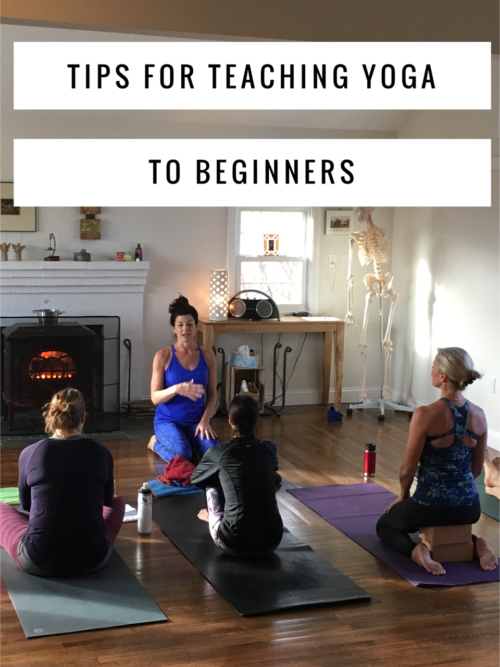
Ah, January! The time for resolutions! So many resolutions have to do with health and wellness and many people will be learning yoga for the first time. One of the wonderful things about yoga is that as popular as it is, there are always need people starting to practice. I find that every January, the studios are filled with new people interested in adding yoga to their wellness regime.
As a teacher, it requires a somewhat different approach when it comes to teaching beginners. While all my classes are what they call ” All Levels,” I have taught classes over the years that were specifically designed for beginners. I think this is a great idea and all studios should have a class or two each week geared towards new students. It can really enhance the experience of the new student if they’re in a class where everyone else is brand new. One of the biggest challenges for so many is that they are apprehensive about going to class. Many people feel that everyone else will be more experienced and they feel self-conscious. In a beginner’s only class, they can feel supported and less self-conscious.
For teachers, it can be helpful for us to change up a few things when we work with beginners. First, let’s just look at some general tips:Â
- If you can, show the student where to set up in class and grab some props for them. New students don’t often know what props to take and often place their mat in the last row. It’s nice to have them somewhere in the middle where it’s easier for them to see but not right in the front.
- Make sure they have mat, towel and water if they need all three items.
When it comes to teaching beginners, it can be helpful to keep a few things in mind:
- Use short action oriented phrases (“press your heel” “bring your feet together” “turn from the ribcage”);
- Refrain from Sanskrit or at least provide the pose name in English first;
- Offer as many modifications as possible;
- Start students in Child’s Pose or do Child’s Pose early on and let students know that if they want to take a break, this would be a good place to rest;
- Refrain from using your own mat in front of the room or if you do, place the mat facing the class rather than sideways. This will allow you to always see the students;
- Keep the sequence fundamental. Refrain from linking more than two or 3 poses together. For instance, if you do a Crescent Twist, perhaps add in Side Plank but then move to the other side;
- Give students time to rest in Child’s Pose at least 3 times in class;
- Consider starting with Crescent Lunge, Knee Down Lunge or even Warrior 2 versus traditional Sun Salutations as Warrior 1 can be quite challenging for new students;
- While maintaining steady breath is so important, for beginners it can be hard to focus on the breath when there is so much struggle in each pose. Therefore, focus on alignment, almost over breath, to help students get steady first. Once they are steady, their breath will come more easily even without cues to the breath;
- If providing any assisting in class, keep the assisting directive and to emphasize alignment;
- As one of the more challenging parts of the sequence is moving from High to Low Push Up, consider stopping class to do a demonstration of this movement. Encourage students to lower to the floor (versus dropping their knees) and focus on lowering everything to the ground at the same time, with control;
- Explain the use of any props so it’s clear why you’re asking them to use a block or strap. For instance, if the hands are interlaced behind the back and you’re asking students to squeeze their shoulder blades together, further explain that this action can be tough if the pectoral muscles are tight. Demonstrate using a strap and explain that the extra length can compensate and help to get the contraction of the muscles (rhomboids) needed between the shoulder blades. This helps seal in the reason for strap use rather than just merely mentioning it (which means the students will forget to use it going forward or won’t understand its benefit);
- Make sure you provide a full 5 minutes for rest at the end;
- Stick around after class to answer questions.
There is so much joy in teaching beginners because their excitement is so palpable. Also, as a teacher it can help us focus on only what is essential to say and do, because if we do more, we will overwhelm the class.
The month of January is a time for taking on new challenges! To that end, I’m hosting a yoga challenge and a yoga anatomy challenge. The Yoga Challenge is specifically designed for people who want to learn yoga and would be a great companion to going to class or perhaps on its own as a primer for before attending public classes. It will consist of several videos with pose breakdown and then a full sequence.
The Yoga Anatomy Challenge is for yoga teachers and is designed to help you increase your knowledge of yoga anatomy. There will be a series of videos and a test at the end of the series to test your knowledge. Both challenges will involve prizes and promotions and lots of great content for FREE!
To find out more, watch the invitation I recorded here.Â
If you’re reading this and you’re a teacher, share your tips for working with beginners!
If you’re a new student, share what you wish your teacher would do when teaching you.
Happy New Year and thanks for reading!
